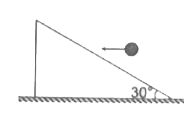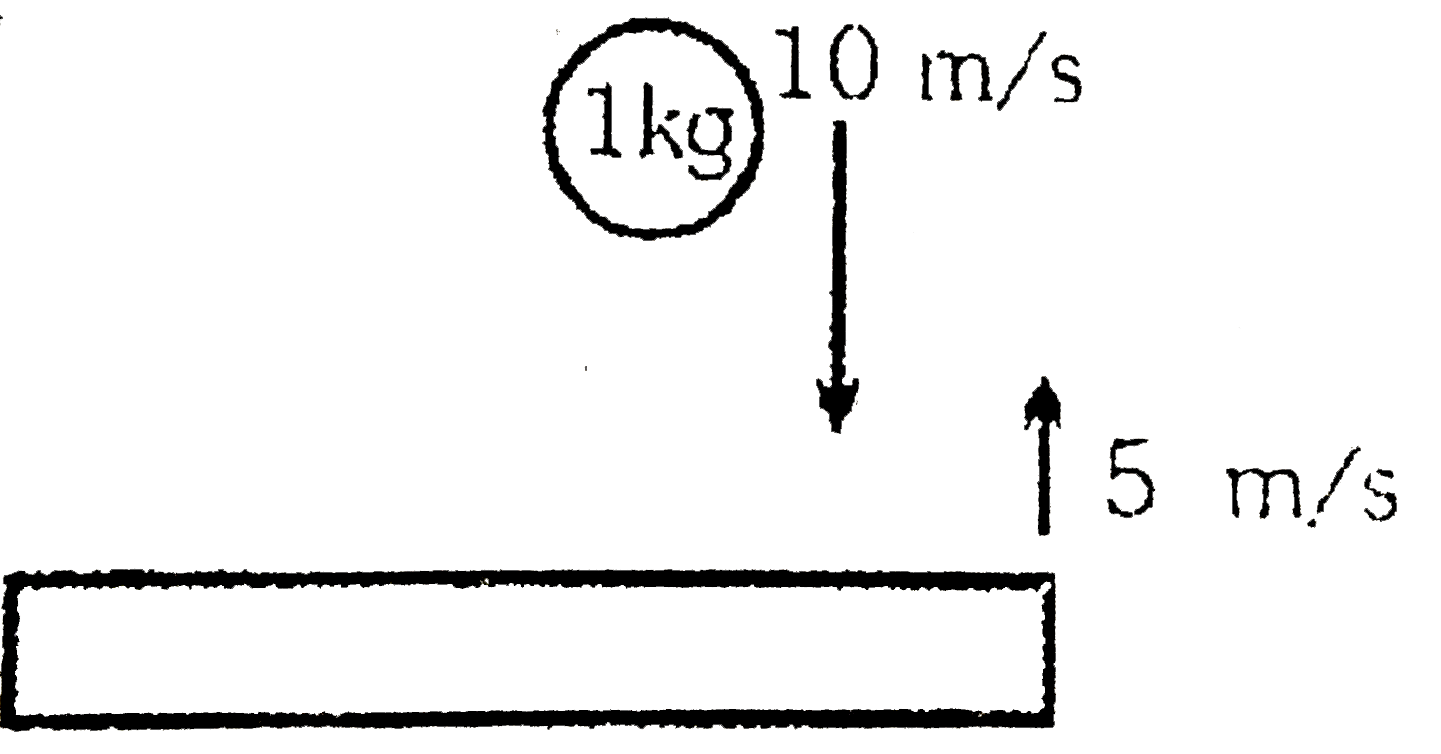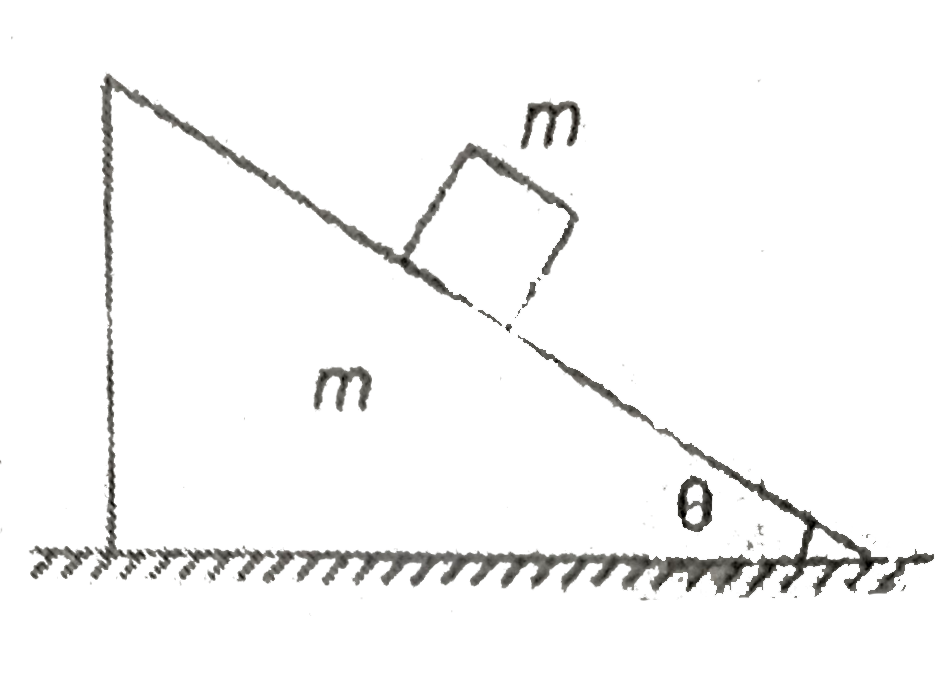A small ball of mass 1kg strikes a wedge of mass 4kg horizontally with a velocity of 10m/s. Friction is absent everywhere and collision is elastic. Select the incorrect answer:

the horizontal component of linear momentum of the system (wedge+ball ) during the collision will remain conserved
the linear momentum of the system (wedge+ball) will remain conserved during the collision
the component of linear momentum of the ball along common tangent will remain same during the collision
the linear momentum of the ball along common normal will change during collision
The correct Answer is:B
Basic information about collision
Topper's Solved these Questions
Similar Questions
Knowledge Check
- Question 1 - Select One
A ball of mass 1kg strikes a wedge of mass 4kg horzontally with a velocity of 10m/s. Just after collision, velocity of wedge becomes 4m/s.Friction is absent everywhere and collision is elastic. Select the correct alternative.
 Aspeed of ball after collision is 12m/sBspeed of ball after collision is 8m/sCimpulse between ball and wedge during collision is 16N-sDimpulse between ball and wedge during collision is 32N-s
Aspeed of ball after collision is 12m/sBspeed of ball after collision is 8m/sCimpulse between ball and wedge during collision is 16N-sDimpulse between ball and wedge during collision is 32N-s - Question 2 - Select One
A boat of mass 40kg is at rest. A dog of mass 4kg moves in the boat with a velocity of 10m/s. What is the velocity of boat (nearly)?
A4m/sB2m/sC8m/sD1m/s - Question 3 - Select One
A ball of mass 10 kg is moving with a velocity of 10 m / s . It strikes another ball of mass 5 kg which is moving in the same direction with a velocity of 4 m / s . If the collision is elastic, their velocities after the collision will be, respectively
A6m/s, 12m/sB12m/s, 6m/sC12 m/s, 10 m/sD12m/s, 25m/s
what will be the wavelength of a ball of mass 0.1 kg moving with a velocity of 10ms−1 ?
View SolutionA particle of mass 0.01 kg moving horizontally with velocity 20 m/s strikes a stationary wedge ABC of mass 0.05 kg with a velocity of 20 m/s near the apex of the wedge is free to move. Second collision of the particle with the wedge occurs at B. Find.
(a) the length AB of the wedge
(b) the normal reaction between the ground and the wedge during the first collision. [Given that angle θ=cot−1 (2)]
 View Solution
View SolutionA ball of mass 1kg strink a heavy platform, elastically, moving upwards with a velocity of 5m/s. The speed of the ball just begore the collision is 10m/s downwards. Then the impulse imparted by the platform on the ball is :-
 View Solution
View SolutionA ball of mass m=1kg strikes a smooth horizontal floor as shown in figure. The impulse exerted on the floor is
 View Solution
View SolutionA body of mass 2kg moving with a velocity 3m/s collides with a body of mass 1kg moving with a velocity of 4m/s in opposite direction. If the collision is head on and completely inelastic, then
View Solution

